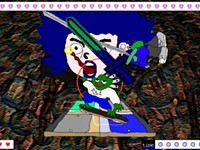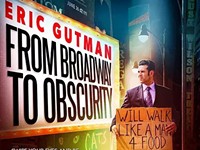[
{
"name": "500x250 Ad",
"insertPoint": "5",
"component": "15667920",
"parentWrapperClass": "",
"requiredCountToDisplay": "1"
}
]
Players' voices echo in a cacophony of varying pitches and intensities. My eyes dart away from my mark and go immediately to the sky. A small white disc cuts through the clear blue sky toward the end zone — a good 25 feet ahead of me and my mark. She sprints toward the end zone, I chase after her. Why the hell did I pick the fastest player to mark? Running at full speed, we simultaneously leap for the disc, our outstretched fingers mere centimeters apart. WHOOSH! The other player snatches the disc out of the air, scoring a point. I'm left standing red in the face, out of breath, and slightly embarrassed that I missed it.
"Good bid!" I hear players from both teams shout to me from the sideline, as I stand totally in awe not only of how good the other players are at my first Ultimate Frisbee game, but also at the sportsmanship in this competitive, football-like game.
There is no shortage of Ultimate players in the Rochester area. From casual, less-organized match-ups among friends (and strangers) on nice days in Ellison and other area parks, to organized league play on weekends throughout the spring and summer, to Rochester's first professional team, the local Ultimate scene is thriving — and growing.
The game has evolved from its low-key beginnings on college campuses. It's still got the same laid-back vibe, but it's no longer just for frat boys or hippies looking for a break from football practice and hacky-sack. During my first game, I stood shoulder-to-shoulder with men and women twice my age, as well as a young man barely out of high school.
"Anyone can play," says Tanya Beiswenger, captain for the team called Dirt in the Greater Rochester Area Disc Association's Spring Fling league. "Literally, anyone."
Humble beginnings
Ultimate Frisbee (or simply "Ultimate," since the term Frisbee is trademarked) has been around for years, but has seen a surge in popularity over the last few decades. Many credit a group of high-school students with inventing the sport at Columbia High School in Maplewood, New Jersey, in the late 1960's. The sport quickly gained popularity on college campuses; the first-ever official Ultimate game on a college campus was between Rutgers and Princeton in 1972. The first College Nationals, made up exclusively of collegiate teams, took place in 1984, with Stanford taking the title.
As the sport picked up momentum, the first players' associations formed in the late 1970's and early 1980's, giving more structure to the then-loosely organized activity. While the laid-back pick-up tradition is still very much ingrained in the fabric of the sport itself, things have grown more competitive, as more traditional athletes get their hands on a disc and catch "Ultimate fever," as some players call it.
In 1979, the Ultimate Players Association (now USA Ultimate) was formed, and since then has been a driving force in growing the sport and organizing tournaments across the country. The Fitness Industry Association lists Ultimate as among the fastest-growing team sports in the country. In 2008 (the most recent year for data), there were an estimated 4.9 million ultimate players in the United States. Sean Donnellan, a player for the Rochester Dragons Ultimate team and board member for the Greater Rochester Area Disc Association, says that there are as many as 4,000 regular Ultimate players In the Greater Rochester area. "It's hard to put an exact number on it, since many people play pick-up games," Donnellan says.
A pick-up game is more casual than league or professional play. "We're very accepting," says Sarah Burns, an Ultimate player and wife of Dragons captain T.J. Burns. "Just show up and bring your dark shirt and your light shirt and someone will bring a Frisbee and you're all set to get hooked."
Game play
To say that Ultimate is fast-paced is an understatement. Just watching a game can be dizzying to the inexperienced viewer, but in a good way. Ultimate combines the non-stop movement and athletic endurance required by soccer with the passing and strategic skills of basketball. Just substitute a swirling piece of airborne plastic for the traditional ball. Although only seven team members are on the field at a time, teams typically have at least 12 to 15 players on the roster because of the constant running. "You need to be able to sub in and let people rest pretty frequently," says local player Dooley Maring.
Play starts with the pull, where one team throws the disc from one end of the field to the other. The other team, waiting on the opposite side of the field, can either catch the disc or let it drop, then pick it up and play it. Once in possession of the disc, a player isn't locked in — he or she can pivot on one foot. This is especially helpful when trying to find an open teammate to whom you can pass. Sometimes they're ahead of you, but sometimes, you need to pass backwards to a teammate just to keep the play moving. (As in basketball, players are not allowed to travel with the disc. They are only allowed a few steps to stop themselves once they catch the disc.) If a pass is incomplete, intercepted, or caught out of bounds, the opposing team immediately gains possession and tries to move the disc in the other direction.
Once a player has the disc, it becomes a hot potato. He or she has 10 seconds to get rid of it, or it's considered a "stall." Defensive players (often called the "markers") are allowed and encouraged to count aloud. If the player doesn't throw the disc by the "T" of 10, possession switches teams. Because of this, play move quickly. Your team can be on offense one second and back on defense the next, then back to offense just a few seconds later.
"If we drop it, there's no debating it: it's a turnover, so all of a sudden we're on defense," says Dooley Maring. "Then if they make a play and it gets knocked down or whatever, it's our disc and we're back on offense."
If a team successfully gets the disc into the end zone, it gets a point and the teams switch sides. The team that scored then gets the next pull. Play continues until a predetermined condition is reached (a certain score or a time limit). This varies depending on the league and level of skill/competitiveness.
Although Ultimate resembles many traditional sports in terms of play, team make-up, and objective, it differs greatly with what's called "spirit of the game." There are no referees, no umpires, no officials calling penalties, etc. (except in professional cases; more on that in a bit). It's up to the players themselves to act sportsmanlike and respect the rules. Sometimes that leads to players calling fouls on themselves. Other times, it can lead to disagreements. With no one in black and white to make the final call, the teams are obligated to talk it out civilly until they can reach an agreement or compromise.
"It's what makes Ultimate different from any other game," says Lynne Boucher, a local Ultimate player and coach. "It makes it a really different playing environment than just about any other sport out there."
That spirit is fiercely upheld by GRADA. The organization, founded in 1999, prides itself on recruiting and encouraging new players and expanding the sport in the Rochester area. It boasts about 1,000 regular members who play in recreational, intermediate, advanced, and women's leagues, as well as puts on regular tournaments throughout the spring, summer, and fall.
Ultimate is pretty much a year-round sport. Even though Rochester winters aren't exactly conducive to playing sports outdoors, some teams adapt and play in indoor leagues to feed their Ultimate habit. Members of GRADA even organize an outdoor tournament in the wintertime to feed their habit. It's called WART, short for "What Are we Thinking?"
Despite its growing popularity, Ultimate isn't a sport that's on everyone's radar. "You see all these amazing plays on ESPN from other sports, and as Ultimate players, we look at it and go, 'That happens in Ultimate every week,'" Beiswenger says. "But people who have experienced Ultimate can't wait to pass it on to someone else."
Beiswenger, like many other Ultimate players, got her start through an impromptu invite to play in college. "I played other sports in college, and one of my friends invited me to play in a pick-up game once and it was love at first play," Beiswenger says. "I've been playing ever since."
Boucher, who says she's been playing Ultimate since about six knee surgeries ago, has been coaching Ultimate teams for the last five years. The Brighton High School team (there are about 20 local high-school ultimate teams) that she coaches won the local championships and placed third at the state level. She also coaches at Nazareth College, where she helped inspire some budding professional players get hooked on the sport, including current Dragons player and GRADA President Joe Becker.
Becker started playing pick-up games at Nazareth while in grad school. "I just got hooked," he says. "Now, all of my friends are Ultimate players. I spend four or five days a week committed to something Ultimate-related," Becker says. "We were talking the other day and were like, 'What if we never played Ultimate, what would our lives be like?' We'd have a completely different circle of friends, a completely different lifestyle because it's easy to find all sorts of people willing to play."
Going to the pros
With more and more people are getting hooked on the sport, a second national league was formed in 2012, the American Ultimate Disc League. In its inaugural season, there were just eight teams, including the Buffalo Hunters — which is now the Rochester Dragons. Just a year after it became the first Ultimate team to play in the AUDL in Upstate New York, the team moved to Rochester and renamed itself. Several of the original Buffalo Hunters team now play as Rochester Dragons.
Becker says he considered trying out when the team was based in Buffalo, but he didn't want to drive an hour and a half away to play a home game. "When I heard the team was coming to Rochester, I was pumped and was like, 'I have to try out,'" Becker says.
Twenty-three players were eventually picked, and the Dragons are just wrapping up a successful first season. Home games are played at Webster Schroeder High School to more than 100 spectators per game. Numbers aside, the fans' enthusiasm is infectious. By the second quarter, I was shouting "Up!" and cheering along with everyone in the stands.
The team plays under AUDL rules, which have been adapted slightly from the original rules of the game to ensure competitive and professional play. The most significant change is the addition of referees, who make the calls on the field (however, the "spirit of the game" is still very much alive, and players can appeal decisions).
Instead of playing to a predetermined score, AUDL games are timed, with four quarters of 12 minutes each and a 15-minute half time. If the score is tied, a five-minute overtime period will be played. If the score remains tied after overtime, a second overtime will be played in which the first team to score wins. Other notable changes include a drop in the stall count from 10 seconds to seven, a five-yard penalty for traveling when catching the disc, and a turnover for traveling when throwing the disc. There are also other rules that result in five-, 10-, or 20-yard penalties, depending on the severity of the infraction.
"When I started, I did not take it seriously," says Dragons player Skylar Brunner. "I thought, 'Oh, this is kind of cool.' Now, it's my life."
It shows. The Dragons players sprint up and down the field — back and forth — hundreds of times per game, leaping like gazelles and diving like Olympic champions, reaching, grasping for every last catch. And even at heights of 4 feet in the air or sliding on their bellies, their fingertips somehow nearly always wrap around the edges of the plastic disc that's cutting through the air at astonishing speeds.
All that skill is a result of weekly practices and constant playing. Becker says that between team practices, Dragons games, and pick-up games, he plays Ultimate pretty much every day of the week, an ethic echoed by pretty much all of his teammates. "In December, it's more like six days a week," he jokes. (I think.)
"This isn't just a sport, it's a lifestyle," Becker says. One that so many in Rochester seem to have embraced. "I've met the best friends of my life this way. I'm always itching to get out on that field. And I wouldn't trade that for anything."
Ultimate Frisbee lingo
Backhand: Standard throw. Players grip the disc with their fingers curled underneath and their thumb on top, then throw across the opposite side of the body (so for left-handed throwers, this throw would be across the right side of their body, and the opposite for right-handed throwers).
Bid: Failed attempt to catch or block the disc.
Bomb: When the defensive team breaks up the advancing team's offense and throws the disc to nobody on the other side of the field. This tactic is used to reset the team's offense and clear out of your own end zone.
Bookends: When a defensive player effectively defends the disc and scores on the ensuing possession.
Brick: Midpoint of the width of the field and 20 yards forward of the defending zone.
Blade: A forehand throw that is thrown high in the air and falls hard and fast, typically to the left side.
Callahan Point (*UPA Rules): When an opposing team has their pass intercepted in their own end zone. This results in a point for the intercepting team.
Chilly: Something players yell to their teammates to remind them to keep calm under pressure and remind them not to rush a throw.
Completion: A player gains possession of the disc by catching it before it touches the ground.
Corkscrew: Reverse hammer throw (see hammer throw)
Cut: When an offensive players sprint out of the stack strategic position.
D: Defense or defend. This includes defensive interceptions, blocks or knockdowns. The defender must have actively touched the disc to cause a turnover.
Dump: A throw to a player who is usually a safety valve. Normally a player that is close by or behind the handler who is an easy throw.
Foot Block: When a player uses his or her foot to block a throw. This is a legal maneuver.
Force: A tactic used by the defending team to force the handler to throw a certain throw (i.e. backhand or forehand) or to a specific part of the field.
Forehand/Flick: Thrower grips the disc with the fingers curled underneath, crossing the disc across their body from left to right (if right handed) and vice versa for lefties, extending their arm forward and flicking their wrist to give the disc momentum.
Hack: Foul.
Hammer: A forehand throw where the disc is thrown over head. This results in the disc flying upside down or sideways before tailing off at the end of its flight.
Handler: Player in possession of the disc.
Hospital Throw: A throw that stays in the air for a long period of time, allowing to be going for the disc at the same time increasing the chances for injury.
Huck: A long throw that extends at least half the distance of the field in an attempt to reach a downfield player.
Layout: Diving to catch or defend the disc.
Macking: Brushing or advancing the disc without catching it.
Mark: 1. (noun) An offensive player a defender is assigned to cover in man-to-man defense. 2. (verb) Similar to a force, but the defender is attempting to block all possible throws by moving their hands & arms. Contact with the other player is not allowed.
Pick: Stepping in front of the disc while on defense either catching it or knocking it down.
Pivot: The legal point of contact for a thrower that must stay stationary (one foot typically). If you move the pivot point, it is considered a travel.
Play-on: Official's discretion to allow play to continue even after a foul has been committed if stopping play would unfairly punish the fouled team.
Possession: When a player has control of the non-rotating disc.
Pull: The throw at the beginning of each points that puts the disc into play for the offense. The throw is performed by the defense and begins at their front end zone line.
Scurvy: The act of faking out a defender so well that they believe you already threw the disc. Hard to do, incredibly embarrassing for the defender if it happens.
Stack: An offensive strategy that lines up all the players in a straight line down the field. Typically one or two players will then cut to get a shot at getting the disc.
Stall: When the stall count reaches 7 (or 10 in some leagues), it results in a turnover.
Stall Count: The interval of time that a thrower is allowed to hold the disc before throwing. The defending team can count aloud until they reach the designated number of seconds.
Swing: Throwing the disc across the field usually to reset the stall count or open up a different side of the field. This throw is not necessarily meant to move the disc down the field.
Swill: A bad throw, usually one that does not have a lot of spin, and likely not to be caught by the receiver without great effort on their part.
Taco: A disc that is warped. If that happens during play, it's either straightened or replaced.
Turn: Short for turnover.
Turnover: When there is a change of possession either through play or penalty.
Up: What players shout to their teammates when they are on defense to let them know that they disc is airborne. That allows defenders to keep their eyes and focus on their mark.









